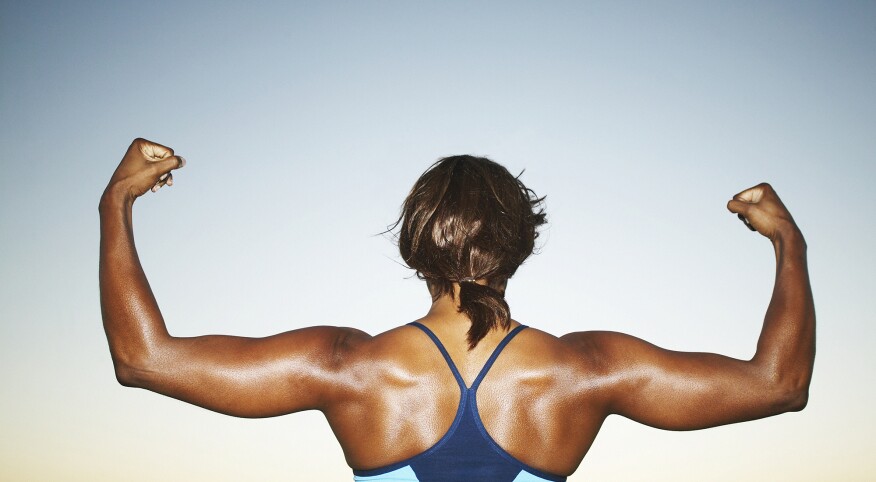There are bonuses that come with arm workouts that go beyond looking fly. “Besides being comfortable and carefree in a sleeveless shirt, the benefit of working out your arms are, it’s easier to open the pickle jar!” says Washington, D.C.–based personal trainer Stenicia Forde. In addition to reducing injuries and slowing the natural muscle loss we experience as we age, Forde adds that “using weights to strengthen and tone our arms and any other muscle group is so good for your heart.”
Plus, since most arm exercises engage your core, you’ll be toning your tummy while you’re at it. In addition, more muscle means your resting metabolic rate will be higher, which will boost your bone density and reduce your risk of osteoporosis.
“Lack of muscle tone is why we have arm jiggle,” Forde says. “For those sexy summer arms, incorporate strengthening and toning exercises that target the deltoids, both anterior and posterior, as well as the triceps and biceps into your workout routine.” The exercises below, coupled with a healthy diet and aerobic exercise, she says, will help put your arms on blast and get results fast. All you need are some light dumbbells — anywhere from 3 to 10 pounds. Or, if you don’t have dumbbells, use two cans of beans or soup. Try to do three sets of 10 reps for each of the following variations. It should take about 15 minutes to complete this routine. Try to do it two to three times a week, with at least one day of rest between workouts.
Standard curls: Stand with your arms at your sides, palms facing forward. Slowly curl your arms upward until you are almost touching your shoulders. This is called the concentric phase of the exercise, when you flex your bicep. Once you have lifted the weights up to your shoulders, slowly begin lowering them back to the starting position. This is called the eccentric phase and involves lengthening the muscle.
Reverse curls: Stand in the same position as above, holding the weights in front of you with your palms facing behind you. Your elbows should be straight and your hands will be below your waistline. Slowly curl the weights up toward your shoulders until the backs of your hands are as close to your shoulders as possible. Then slowly lower your hands back to their starting position.
Lateral curls: This time, starting with your arms at your sides, hold the weights sideways so that your palms face your outer thighs. The thumb side of your hands will be facing forward; the pinky side of your hands will be pointing behind you. Slowly raise your arms up toward your shoulders. The back of your right hand should be facing to your right. The back of your left hand should point toward the left. Then slowly return to the starting position.
Preacher curls: Hold a weight in your right hand and sit on a chair or bench with your right elbow anchored against your right thigh and your hands in a fist facing upward. In the starting position, your right elbow should be almost straight. Slowly bend your arm up until the weight is almost in contact with your right shoulder. Then slowly return the weight to its starting position. Repeat with your left arm on your left thigh.
Tricep kickbacks: Hold a weight in each hand with your palms facing in toward your outer thigh. Stand with your knees slightly bent. Bend forward from your waist so that your torso is parallel to the floor. Bend your elbows so the weights are on both sides of your chest. This is the starting position. Slowly extend your elbows back behind you with your arms close to your body and straighten your arms so that you are lifting the weight up and back behind you. Slowly return to the starting position.
Tricep dips: Sit at the end of a chair and grip the edge of the chair behind you, palms facing backward; your fingers should be pointing forward. Slowly lower your body almost to the point where your butt reaches the ground, and then use your arms to push yourself back up to the starting position. To make this exercise harder, extend your legs straight in front of you with your weight on your heels. To make it easier, bend your knees at a 90-degree angle.
Did you know that you’ll find professional workout videos, walking tips, health articles and more at aarp.org? AARP members get even more, including mind-body advice from top experts and delicious healthy recipes. Join us or renew your AARP membership today.

Getty Images










